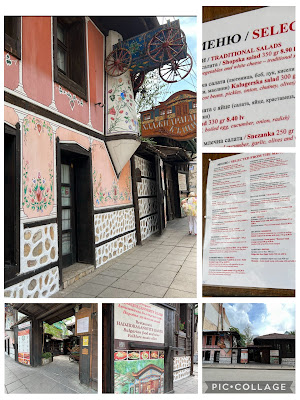The life long educator in me loves learning opportunities & I avail myself to local courses whenever I can.A local haberdashery shop runs interesting workshops. I have done several there & I did my first free motion workshop there a few years ago. It was for a 3D tree in a tea cup & it was great fun & I was delighted with the result even though I had to work through my machine settings to get set it up.
This one popped up for Free motion threads bowl & it looked absolutely gorgeous - making a bowl using soluble fleece & then shaping it.
It incorporates a fabric pattern you might like so the possibilities are endless. You have to take your own threads to match the sample of fabric you wish to incorporate as well as a glass cereal bowl to dry your shape on.
What fun it was, the machines set up for just 2 of us, what a privilege to have a small class.
Bobbin & machine threaded with a grey thread to do the 'spiders web' support for the bowl & soon the 2 machines were humming happily with a steady sound.
Tea & cake while colours were threaded, we both opted for the variegated thread in pinks which saved on winding bobbins & rethreading the machines.
Free motion machine embroidery using water soluble fleece relies just on threads to hold it all together when the fleece is washed away so you have to concentrate on the stitches touching each other & sufficient stitches to maintain a shape.
I rather liked the example with a flower shape in it so I roughly drew one on my fabric & embroidered it, going over the shape several times to give it support.
The variegated thread gave a lovely tone of pinks.
Using circular movements helps to give your shape more structure because, from past experience, straight lines tend to collapse because they are not joined at enough points.
I had a few flower fabric shapes cut out so those were machine embroidered on lastly, more to check the technique than a must, being aware that the circular shape will become a bowl shape so placements need to be right for when it is done.
Un-hooped, trimmed of the excess soluble fabric then a quick dunk in a basin of warm water before it is placed over the glass bowl & eased in to the final shape.
I straightened out some of the lines of thread, flattened some of the circular bits I had embroidered around the top edge etc.
The fabric bowls are then eased off the glass bowls & only then do you know if your stitches will hold the shape you want or if there will be a collapse needing a starch spray ...
I returned to pick up my bowl this morning & all is well. It came off the glass bowl easily & holds its shape well.
It is a flatter bowl but with interesting edge details & I am rather pleased with this first effort at a new technique.
Are you up for new challenges too? What is on your list? Thank you for stopping by, it is always appreciated.
Dee 🧵🪡🧺👩🎨



















































